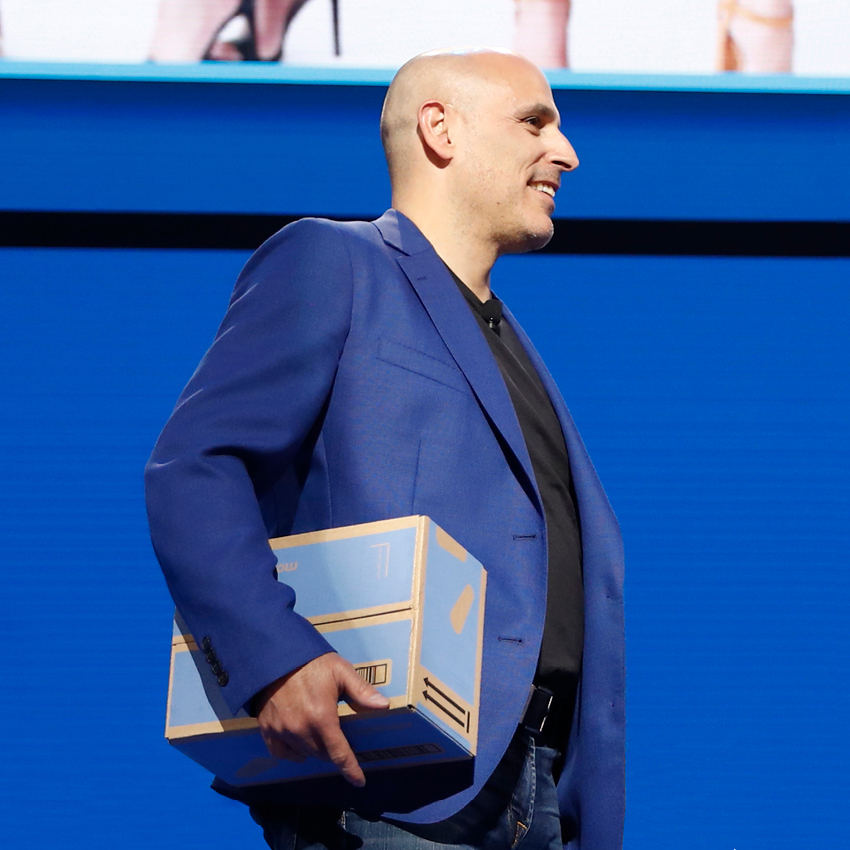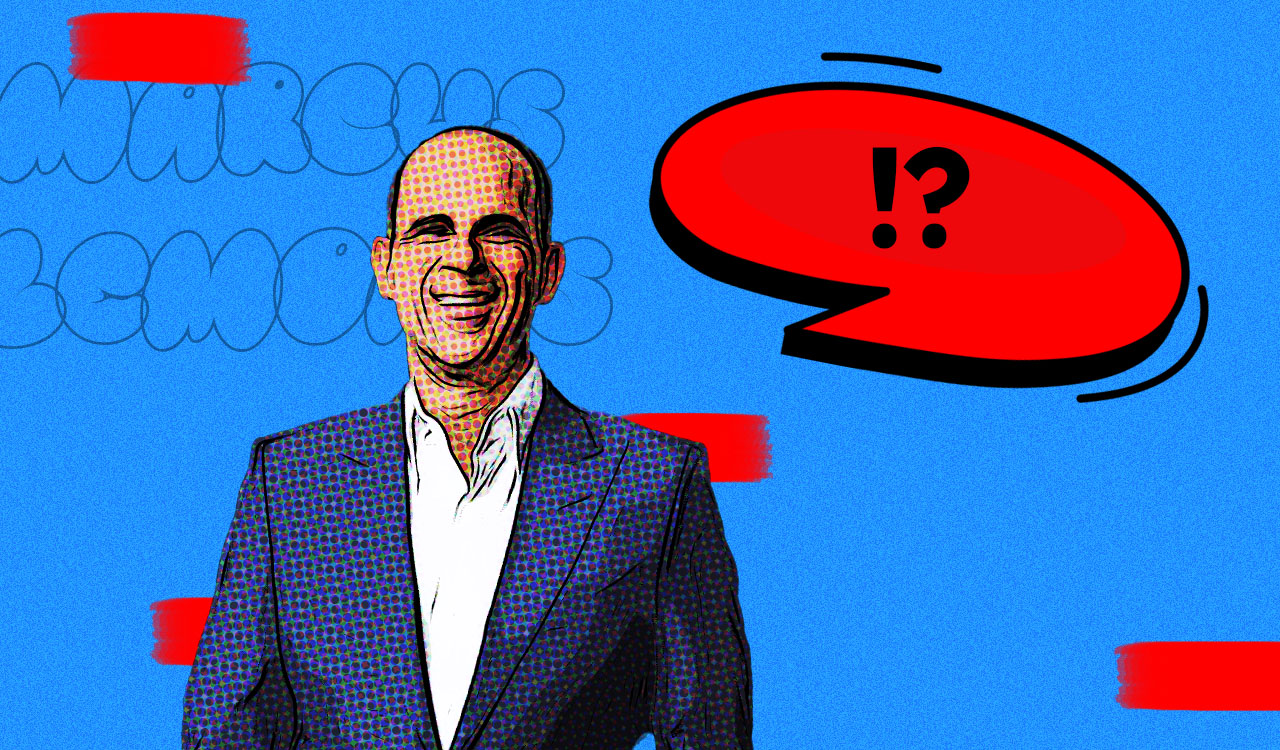Marc Lore announced his departure from his role as President and CEO of Walmart\’s ecommerce business (which included Jet.com prior to its being shut down in June of 2020 and absorbed into walmart.com) at the end of January. Was it a \”mission accomplished,\” moment or was he given the boot? If it\’s the latter, it was nine months ahead of his five-year agreement to remain as a Walmart employee until September of 2021, at which time he would have received his full payout, (including a stock valuation of roughly $150 million, according to Recode).
Money Matters
Maybe Walmart wanted him out so badly they made good by granting an earlier agreed upon payout. Or maybe Lore, so wealthy from Amazon\’s $550 million acquisition of his Quidsi business (diapers.com) in 2011 and Walmart\’s $3.3 billion buyout of Jet.com in 2016, that he simply didn\’t need the September payout, and negotiated an earlier departure. Walmart might have agreed to an early departure because they believed he accomplished the mission Walmart expected of him.
[callout]The thinking process of entrepreneurs like Lore, Musk and Bezos do not, and thankfully, could not, be fully digested or embraced by huge legacy publicly owned companies.[/callout]
Friendly Divorce
Having analyzed many accolades given to Lore by Walmart CEO, Doug McMillon, coupled with Lore\’s public comments of his respect for Walmart and McMillon, and that Lore intends to assist Walmart whenever they may need his advice and guidance, I believe the divorce was a friendly kumbaya moment. After all, during Lore\’s tenure, Walmart won the number-two spot of U.S. online sales, growing annually in the double-digits and doubling market share to 5.8 percent. And not so incidentally, Walmart\’s stock price increased 80 percent since the Jet acquisition. In context, Amazon, still the number-one U.S. online retailer, has almost a 38 percent share of market according to eMarketer.
Serial Entrepreneur
The serial entrepreneur that Lore is freed him up to invest his millions or billions in a multi-decade project to build \”a city of the future\” supported by \”a reformed version of capitalism,\” according to Recode. Go figure that one out. \”Imagine a city with the vibrancy, diversity and culture of New York City combined with the efficiency, safety and innovation of Tokyo and the sustainability, governance, and social services of Sweden,\” reads the vision statement for the project. \”This will be our New City.\”
\”This is going to be a lifelong project,\” Lore adds. \”It\’s the thing I\’m most passionate about.\” Talk about a visionary. In fact, the Elon Musk level of visionary comes to mind, even though, like many entrepreneurs, Elon shredded through billions and billions to get where he is today.
In retrospect, we may never know if some of the negative speculations in my three previous articles read into what led to McMillon\’s and the Board\’s quiet decision to oust Lore, give him a golden parachute and get his promise to go quietly into the night.
Walmart’s Losing Money in Its e-Commerce Business! So What?
Is Marc Lore a Walmart Dilemma?
Walmart and Jet.com Failed “Marketing 101”
Co-Reliance
From the get-go, even though many pundits said Walmart way overpaid for Lore, the acquisition looked to be a great synergy adding value that would accelerate Walmart\’s quest to battle Amazon for dominance. Lore, as the former fox in Amazon\’s henhouse and genius of all things technology, would be the star \”get\” for the three-plus billion-dollar deal.
Jet got from Walmart:
- Its behemoth size and deep pockets, (pushing to three-quarters of a trillion dollars in sales vs. close to $300 billion for Amazon in 2019).
- Its global scale.
- Its ability to turn its roughly 4500 stores in the U.S. (accessible within 4.2 minutes for 90 percent of the population) into the dual function of retail stores and distribution centers. At the time, Amazon had about 180 distribution centers in the U.S. and was just beginning to test physical stores. By comparison, Amazon\’s distribution/fulfillment centers were within 20 miles of 31 percent of the population.
Walmart got from Lore:
- Jet.com\’s demonstrated ability to scale with speed, reaching $1 billion in run-rate Gross Merchandise Value (GMV) and offering 12 million SKUs in its first year.
- A growing customer base of urban and millennial customers with more than 400,000 new shoppers added monthly and an average of 25,000 daily processed orders.
- Best-in-class technology that rewards customers in real time with savings on items that are bought and shipped together, thereby reducing the supply chain and logistics costs often buried in the price of goods.
- A select group of more than 2,400 retailer and brand partners tailored to create an attractive and distinctive assortment for consumers.
- Marc Lore, the entrepreneur.
Trouble in Paradise
While the best-laid plans for all acquisitions and mergers look great on paper, the implementation and integration of the two is never as smooth as expected. For a behemoth like Walmart with over 80 years of culture and process building in a highly structured, pre-technology industry, it was a daunting challenge for McMillon to completely transform the model to survive in this new era. What\’s more, Walmart was waging an ongoing battle with Amazon for dominance. So, executing a smooth merger between Walmart and an entrepreneurial, startup culture led by Lore, turned out to be a daunting task.
Lore was given wide latitude and freedom to invest, test and win or fail fast. And out of the starting gate, he did just that. One of Lore\’s strategies was to build out a \”long tail\” of exclusive digital native brands (Bonobos, ModCloth, MooseJaw, ShoeBuy, Hayneedle and Eloquii) that he believed would differentiate Jet.com from Amazon. Modcloth has since been sold, and, who knows about the fate of the others, given the fact that they are still likely to be unprofitable. His JetBlack initiative, a concierge service targeting wealthy urban consumers was tested in New York and failed.
There were some wins, like the growth of curbside grocery pickup, eightfold expansion of its online merchandise catalog and giving small merchants another option to diversify their businesses. Walmart launched a $98-a-year membership program to compete with Amazon\’s Prime, and they introduced free two-day shipping, as well as next-day and same-day delivery for a limited selection of goods.
A Matter of Accounting
Amidst this flurry of investing in new businesses and innovative concepts, the investments would become costs from managements\’ view, adding up to a loss of about billion dollars in their ecommerce business (posted in July of 2019).
Pause here for a cliff note and educational message for all business leaders. A fatal flaw in thinking occurs when big legacy business leaders of public companies cower under the short-term quarterly pressure from Wall Street to show positive financials. So, there is a conundrum as to how many of these leaders report what is an investment in the business or a cost. I\’m sure the startup mentality of Lore was that throwing money around into hundreds of initiatives was viewed as investments into the future.
In Walmart\’s case, it was a loss. This may have been the beginning of the parting of the ways between one of the biggest public companies on Earth and a serial entrepreneur, based on how they viewed the posted billion-dollar loss.
That\’s why the thinking process of entrepreneurs like Lore, Musk and Bezos do not, and thankfully, could not, be fully digested or embraced by huge legacy publicly owned companies. In my opinion, Doug McMillon acted enough like an entrepreneur to know that he needed the mindset of Marc Lore to assist him in his incredibly bold vision of a reinvented Walmart. And he gave him a long runway (or was it a leash?). Fail fast: Some of the investments worked and others did not. However, along the way leading up to the posted billion-dollar loss, there were reported internal tensions building among some of the leaders of the legacy business and Lore. Other reports stated that Walmart was reorganizing to bring the money losing ecommerce business under its U.S. stores division (which delivers most of Walmart\’s profits and essentially was carrying Lore\’s losses) for tighter control.
I believe McMillon and Lore knew now was exactly the right time to part ways. Neither are the poorer for having made that decision. Lore leaves with more money than he ever dreamed of. That may not personally matter to him, except that now he can invest in his \”city of the future\” vision, which is probably much more exciting for him than hanging with Walmart. And Walmart benefited by fundamentally changing its model with Lore\’s assist. So, at this point, I think they are high fiving each other.
The Lesson
At the end of the day, the good news is that there are super entrepreneurs who are creating a whole new world. The bad news is that they, or their investors (including giant legacy retailers) too often don\’t know when to bring in business leadership to instill operational discipline and strategies for long-term profitable growth. In the case of a company like Walmart, they need to know when the entrepreneurial ideas have reached a scale point that requires professional business managers to take the scale to a much higher level.
I believe McMillon did know that the time was right, and that worked out just fine for Lore.




